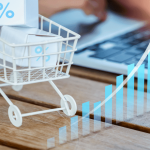While inflation hit mid-2022, the economy was just opening up and consumers were still quite ready to spend. But now that some time has passed and the rise in the cost of goods and services has become noticeable and of course, retailers will feel the brunt of the effect including surplus inventory, higher storage costs, and a decrease in revenue.
Summary
• Tailoring prices based on the product, the product segment, and the willingness to pay is the way to survive and thrive in an inflationary market
• There are many popular pricing techniques you can adopt based on your product and business goals
• Competitive pricing can increase customer acquisition for highly price-sensitive products
• Optimising pricing strategy to accommodate omnichannel shopping can help you capitalise on the 73% of retail consumers who use multiple channels.
• Subscription pricing can help you build better customer relationships while ensuring retention and recurring revenue.
• By personalising prices and promotions, and avoiding additional charges during checkout, you can avoid revenue loss due to cart abandonment
• According to a study by McKinsey “Retailers that take a surgical approach are more likely to emerge with profitability and consumer relationships intact.” This includes tailoring price increases based on the product, the product segment, and the willingness to pay.
• This is where AI-based price intelligence tools come into play. They not only make your life easier but also give you an edge over your competitors by helping you track competitor prices based on product and segment, and customers’ willingness to purchase through stock statuses.
• The tool also tracks promotions run by your competitors so you can plan your pricing and promotion strategy to give your customers the best deal thereby retaining their loyalty to you!
• Now that we’ve established how crucial your pricing strategy is going to be for your retail business in 2023, we’ve pulled together some latest trends that retail businesses are employing to not just stay afloat through inflation but also acquire more customers, improve customer retention, experience, and satisfaction, and stay ahead of the competition.
|
Competitive pricing for customer acquisition
59% of shoppers use their mobile devices in-store to compare costs and research deals making competitive pricing an excellent way to beat the competition both online and offline and ensure customers choose you over another retailer.
Competitive pricing is where you price your products based on your competitor’s prices for similar products. This method of pricing works best for price-sensitive products and if there are products in the market that are similar to yours.
Whether you are an online retailer or a brick-and-mortar store, it is imperative that you track market movements and get real-time information on competitor prices. The challenge however is knowing what the competitor’s prices are accurately and in real-time.
AI-driven competitor price tracking tools like pricechecker help you get this information and keep your prices competitive without compromising on your margins.
Pricing to accommodate omnichannel shopping
73% of retail consumers use multiple channels to shop meaning, omnichannel shopping is here to stay which means you have to find the right pricing strategy based on your products and customer behaviour to ensure sales, revenue, and most importantly customer retention.
There are 3 different pricing strategies you can employ depending on your goal and customer behaviour.
Omnichannel pricing: This is where your price is the same across all channels. This works best if your goal is customer acquisition and satisfaction.
Channel-specific pricing: here, your price varies depending on the channel. This works best if you believe your customers do not spend as much time researching or if you’ve figured out the channel that works best for your business or if you want to increase sales/profit in a certain channel.
Combination pricing: in this case, the prices of your products are the same across all channels but you push customers towards a specific channel through channel-specific promotions, rewards, or coupons. This works best for well-established businesses looking to provide a unified customer experience.
Subscription pricing to ensure retention and revenue
If you thought the subscription model works only for software and streaming services, you cannot be more wrong. Over 15% of online shoppers have opted for one or more subscriptions and with the intent to purchase goods online continuing to rise since the pandemic, subscription-based Ecommerce can be a game changer for you if you are selling that satisfies a recurrent need. This could include anything from coffee and bread to ink cartridges and cleaning supplies!
Subscription pricing is for you if you’ve successfully established that the need for your product is recurrent and you are looking to
- Ensure customer retention
- Build a better relationship with your customers
- Generate recurring revenue
- Gather first-hand customer data
- Offer personalisations and curations
The best part of subscription pricing is being able to choose from a variety of models based on your product, customer behaviour, and business and revenue goals.
Personalised pricing for excellent customer experience
This is where you leverage technology to offer a personalised shopping experience for your customers. For example, if a customer has looked at a product on your website but has not purchased it, you can send them a coupon or offer a discounted price or free shipping to encourage them to make the purchase.
While this is best suited for businesses that sell highly price-sensitive products, it also works if you’ve got a product that you know your customers cannot get enough of once they’ve tried it. You can recognise these products based on customer reviews, ratings, and of course recurring sales.
Personalised pricing and promotions can increase your return on investment by 5-10% and pricechecker can help you do this by tracking prices and reviews of products so can identify the right products to deploy this pricing strategy with!
Pricing to avoid cart abandonment
80% of carts are abandoned and the big reason for abandonment is additional costs during checkouts like shipping and taxes. This is not only bad for your business in terms of revenue but can also create distrust amongst your customers because what they see is different from what they actually pay.
More and more businesses are optimising their pricing strategy to avoid this. Some techniques include displaying all-inclusive prices, accommodating free shipping, being upfront about shipping costs, etc. thereby improving sales and revenue.
Pricing to capitalise on holiday shopping
It’s no secret that retail shopping sees a boom during the holiday season but what you might not have known is that off-late customers are shopping ahead of the festivals to capitalise on the best deals and promotions.
To make the best of the shopping boom, you must do more than just offer promotions during the holidays and run promotions based on customer behaviour on a more regular basis to keep them shopping. Additionally, running promotions on any product (seasonal or not) during the holidays can help boost sales and revenue.
Pricing intelligence software like pricechecker which is equipped with promotion tracking software can help you know what promotions your competitors are or have been offering so you can plan your promotional strategy accordingly.
The bottom line is, customer behaviour is ever-evolving and it is important to know and accommodate them if you want to stay relevant and profitable.
The most efficient way to do this is by leveraging technology that will help you gain insight into customer behaviour AND your competitors’ reaction to them.
This will not only ensure your existing customers get the best deal and continue to choose you, but also help beat the competition by making you more attractive in the eyes of consumers.
Result : improved acquisition, better retention, and an increase in revenue.
Pricechecker not only tracks your competitor prices, but provides price history, competitors’ promotions (including coupon codes and price after promotion) and promotion history, stock status and stock history making it an all-round competitor intelligence tool that will give you the edge you need to stay ahead of your competition this year!




